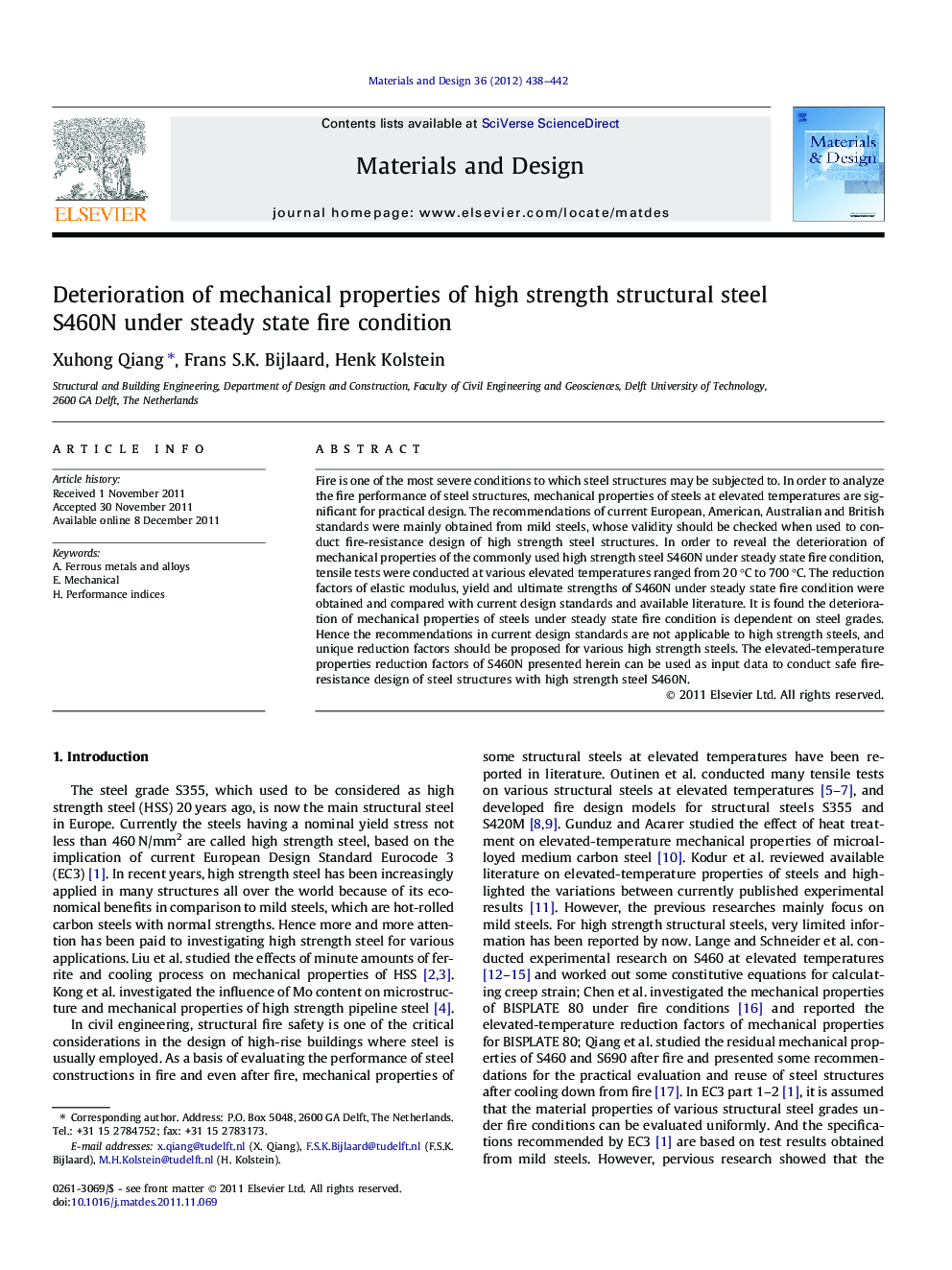| Article ID | Journal | Published Year | Pages | File Type |
|---|---|---|---|---|
| 830864 | Materials & Design (1980-2015) | 2012 | 5 Pages |
Fire is one of the most severe conditions to which steel structures may be subjected to. In order to analyze the fire performance of steel structures, mechanical properties of steels at elevated temperatures are significant for practical design. The recommendations of current European, American, Australian and British standards were mainly obtained from mild steels, whose validity should be checked when used to conduct fire-resistance design of high strength steel structures. In order to reveal the deterioration of mechanical properties of the commonly used high strength steel S460N under steady state fire condition, tensile tests were conducted at various elevated temperatures ranged from 20 °C to 700 °C. The reduction factors of elastic modulus, yield and ultimate strengths of S460N under steady state fire condition were obtained and compared with current design standards and available literature. It is found the deterioration of mechanical properties of steels under steady state fire condition is dependent on steel grades. Hence the recommendations in current design standards are not applicable to high strength steels, and unique reduction factors should be proposed for various high strength steels. The elevated-temperature properties reduction factors of S460N presented herein can be used as input data to conduct safe fire-resistance design of steel structures with high strength steel S460N.
► Mechanical properties of HSS S460N at elevated temperature are obtained. ► Elevated-temperature mechanical properties of steels are dependent on steel grades. ► No current design standard is applicable to HSS S460N under fire condition. ► Research results offer accurate information for structural design engineers.
